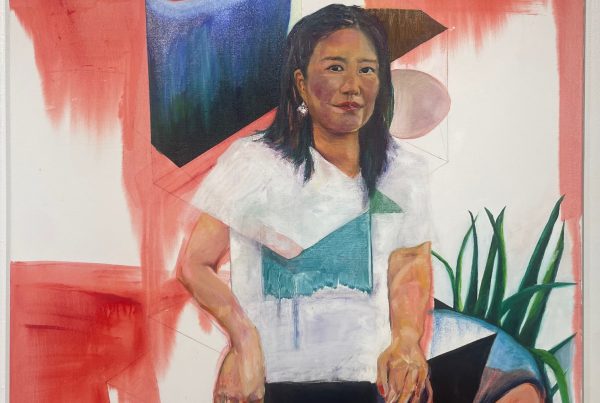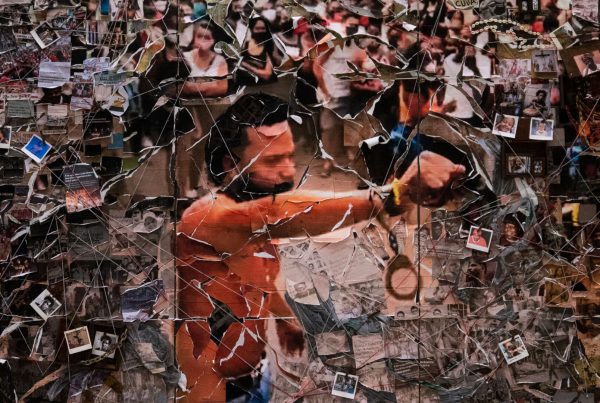10. White Material
French auteur Claire Denis’ difficult art-house drama – which doesn’t open in South Florida until Jan. 7 – follows a European colonialist, played by Isabelle Huppert, as she attempts to run her coffee plantation amid the unconventional warfare of the unspecified African country in which the film is set. The movie’s existential dread is palpable, and buried in the director’s poetically grubby landscapes is a potent indictment of our capacity for human savagery.
9. The Ghost Writer
Personally, this wasn’t the best year for Roman Polanski, but professionally, his sleek adaptation of Robert
Harris’s novel made for the best Hollywood thriller in years – even if it technically wasn’t shot in the United States. Suffused with a patient sense of Hitchcockian voyeurism and mystery and set against the backdrop of real-world political war crimes, “The Ghost Writer” is an intelligent piece of self-aware entertainment; not to mention it’s the best work in years by one of our remaining living masters.
8. Hereafter
The first of a few choices in this list likely to invite controversy, Clint Eastwood’s touching evocation of the afterlife was one of the most cruelly chastised films of 2010. From its riveting, apocalyptic opening stanza to its sublime conclusion,”Hereafter” has the well-oiled craftsmanship and emotional wallop to make the most hardened nonbeliever rethink his approach to life after death. To remain unmoved by the death-obsessed triptych may be to completely disregard the capacity for movie magic – a typically cliched term that has rarely felt as appropriate, and poignant, as it does here.
7. Howl
This massively underrated collage film, the first fiction feature from documentarians Rob Epstein and Jeffrey Friedman is, like its monumental source material, a radical formal experiment in four parts. James Franco may be receiving all the praise this year for “127 Hours,” but I prefer his immersive portrayal of Allen Ginsberg, seen here in his self-reflective prime. The movie’s animation passages are top-notch, and so are the courtroom reenactment scenes, where terrific characters actors such as David Strathairn, Jon Hamm and Jeff Daniels help contribute to an eloquent, eternally relevant argument against censorship.
6. Please Give
The specters of death and disease hover subtly over this pungent comedy about guilt, class and entitlement from writer-director Nicole Holofcener. She gives us characters that are deeply and uniquely
flawed – such as Catherine Keener’s deco furniture store owner, conflicted about the vulturine way she buys priceless goods from the vulnerable kin of the recently deceased, and Amanda Peet’s deceptively confident skin-care specialist, who sees nothing wrong with stalking her ex-boyfriend’s latest paramour – and makes us empathize with, and relate to, their complex problems. The existential anxieties of well-to-do New Yorkers haven’t been elucidated this brilliantly, or funnily, since Woody Allen in his seriocomic prime.
5. Exit Through the Gift Shop
Contrary to popular opinion, the most inventive movie of 2010 wasn’t the cheeky teen comedy “Scott Pilgrim Vs. the World:” It was a satirical (pseudo?) documentary about street art from renowned graffiti trickster Banksy. In “Exit Through the Gift Shop,” Banksy follows aspiring videographer-turned-street-artist Thierry Guetta from French shopkeeper to best-selling art sensation, all thanks to a savvy marketing campaign and positive word-of-mouth from his underground art peers. The fact that Guetta’s derivative style contains no discernable talent reflects worst on us, the art consumers, for buying into a fraud. Then again, the entire film may be a hoax from Banksy, which makes the director even more brilliant than I thought.
4. Enter the Void
Controversial Franco-Argentine filmmaker Gaspar Noe offered up this hallucinatory trip through modern-day Tokyo, which dramatizes the estrangement of a brother and sister after the former dies in a drug dealing incident. Past and present commingle as we follow the young man’s soul through a twisted afterlife of meretricious glitz and sexual deviancy. Uncompromising all the way through to its ambiguous, “2001: A Space Odyssey”-like ending, “Enter the Void” is decidedly not for everyone, but art-house devotees will be magnetically drawn to its profound descent into the nightmares of post-human consciousness.
3. Winter’s Bone
As wonderful in its meandering diversions of local color as it is in the central narrative of a child’s quest for her father, “Winter’s Bone” is a one-of-a-kind journey into the uncharted cinematic territory of the Ozark Mountains. Newcomer Jennifer Lawrence provides a fearless leading performance, matched only by John Hawkes as her junkie uncle. But it’s the unflinching ambiance that writer-director Debra Granik imbues her world that really carries this movie, a film as truthful and pure as any fly-on-the-wall documentary. The images in “Winter’s Bone” are rarely pretty, but you can’t look away.
2. Everyone Else
This feature from blossoming German director Maren Ade (a year after Kathryn Bigelow gave us the Oscar-winning “Hurt Locker,” it has quite a year for female directors) is a quietly gripping portrait of a relationship on the brink of collapse. Touching on previous art-cinema touchstones such as Antonioni’s “L’Avventura” and Rossellini’s “Voyage to Italy,” the unraveling happens while the couple is on holiday in the Mediterranean. As we follow the characters in their day-to-day lives, actions that felt perplexing or benign early in the film take on new significance. “Everyone Else” is a phenomenal study of mental and physical displacement that, contrary to Hollywood logic, doesn’t play any of its cards by offering easy solutions: It prefers to let its characters flounder for connection before our perceptive eyes, and it’s all the more memorable for it
1. I Am Love
As I said in my original review of this epic melodrama, “I Am Love” “channels the emotional extremity of
Italian opera, the layered structure of classic symphonies and the detailed sweep of the Russian novel.” Tilda Swinton is revelatory as the heiress of bourgeois Italian aristocracy whose torrid love affair is only as sexy as the scenes of food preparation, which are filmed with sensual poetry by director Luca Guadagnino. The movie’s plot is a succession of unpredictable game-changers, and its bravura style pays homage to a century’s worth of Italian art while charting a new, inspirational path forward, making it the year’s most staggering achievement.






